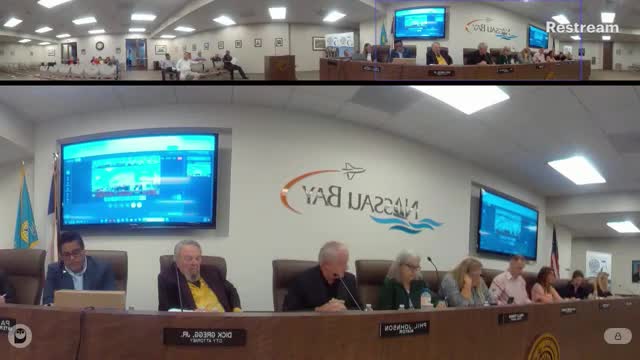Community Pushes for Waterway Safety Ordinance Amid Concerns
August 13, 2024 | Nassau Bay City Council, Nassau Bay, Harris County, Texas

This article was created by AI summarizing key points discussed. AI makes mistakes, so for full details and context, please refer to the video of the full meeting. Please report any errors so we can fix them. Report an error »

In a recent government meeting, officials discussed a proposed ordinance aimed at enhancing safety on local waterways, amid growing concerns from residents about noise, speed, and safety issues. The ordinance seeks to establish a committee to address these concerns, but some council members expressed reservations about passing the ordinance before the committee has had a chance to convene and gather input from public safety officials and community members.
One council member suggested implementing a \"sunset provision,\" which would allow the ordinance to expire after 60 to 90 days, giving the newly formed committee time to evaluate its effectiveness and propose modifications. This approach aims to balance immediate safety needs with community input, particularly as Labor Day weekend approaches—a time when waterway traffic is expected to increase significantly.
The meeting highlighted a well-attended workshop where community members voiced their concerns about the current state of the waterways, emphasizing the need for speed regulation and noise control. Participants included a diverse group of residents, including families and local voters, who expressed a desire for more stringent measures to manage the influx of boats and ensure safety for all users.
Council members acknowledged the challenges faced by law enforcement in enforcing existing regulations, particularly regarding excessive wake and speed. They emphasized the importance of establishing clear, measurable guidelines that can be easily enforced, such as designated no-wake zones.
While some officials advocated for immediate action to implement the ordinance, others stressed the importance of allowing the committee to play a significant role in shaping future regulations. The discussion underscored a commitment to data-driven decision-making, with council members expressing a desire to gather information on the ordinance's impact and adjust it as necessary based on community feedback.
As the council moves forward, the focus remains on ensuring the safety of residents and visitors alike, while also empowering local voices to contribute to the management of their waterways. The outcome of this ordinance could set a precedent for how community concerns are addressed in future regulatory efforts.
One council member suggested implementing a \"sunset provision,\" which would allow the ordinance to expire after 60 to 90 days, giving the newly formed committee time to evaluate its effectiveness and propose modifications. This approach aims to balance immediate safety needs with community input, particularly as Labor Day weekend approaches—a time when waterway traffic is expected to increase significantly.
The meeting highlighted a well-attended workshop where community members voiced their concerns about the current state of the waterways, emphasizing the need for speed regulation and noise control. Participants included a diverse group of residents, including families and local voters, who expressed a desire for more stringent measures to manage the influx of boats and ensure safety for all users.
Council members acknowledged the challenges faced by law enforcement in enforcing existing regulations, particularly regarding excessive wake and speed. They emphasized the importance of establishing clear, measurable guidelines that can be easily enforced, such as designated no-wake zones.
While some officials advocated for immediate action to implement the ordinance, others stressed the importance of allowing the committee to play a significant role in shaping future regulations. The discussion underscored a commitment to data-driven decision-making, with council members expressing a desire to gather information on the ordinance's impact and adjust it as necessary based on community feedback.
As the council moves forward, the focus remains on ensuring the safety of residents and visitors alike, while also empowering local voices to contribute to the management of their waterways. The outcome of this ordinance could set a precedent for how community concerns are addressed in future regulatory efforts.
View full meeting
This article is based on a recent meeting—watch the full video and explore the complete transcript for deeper insights into the discussion.
View full meeting
